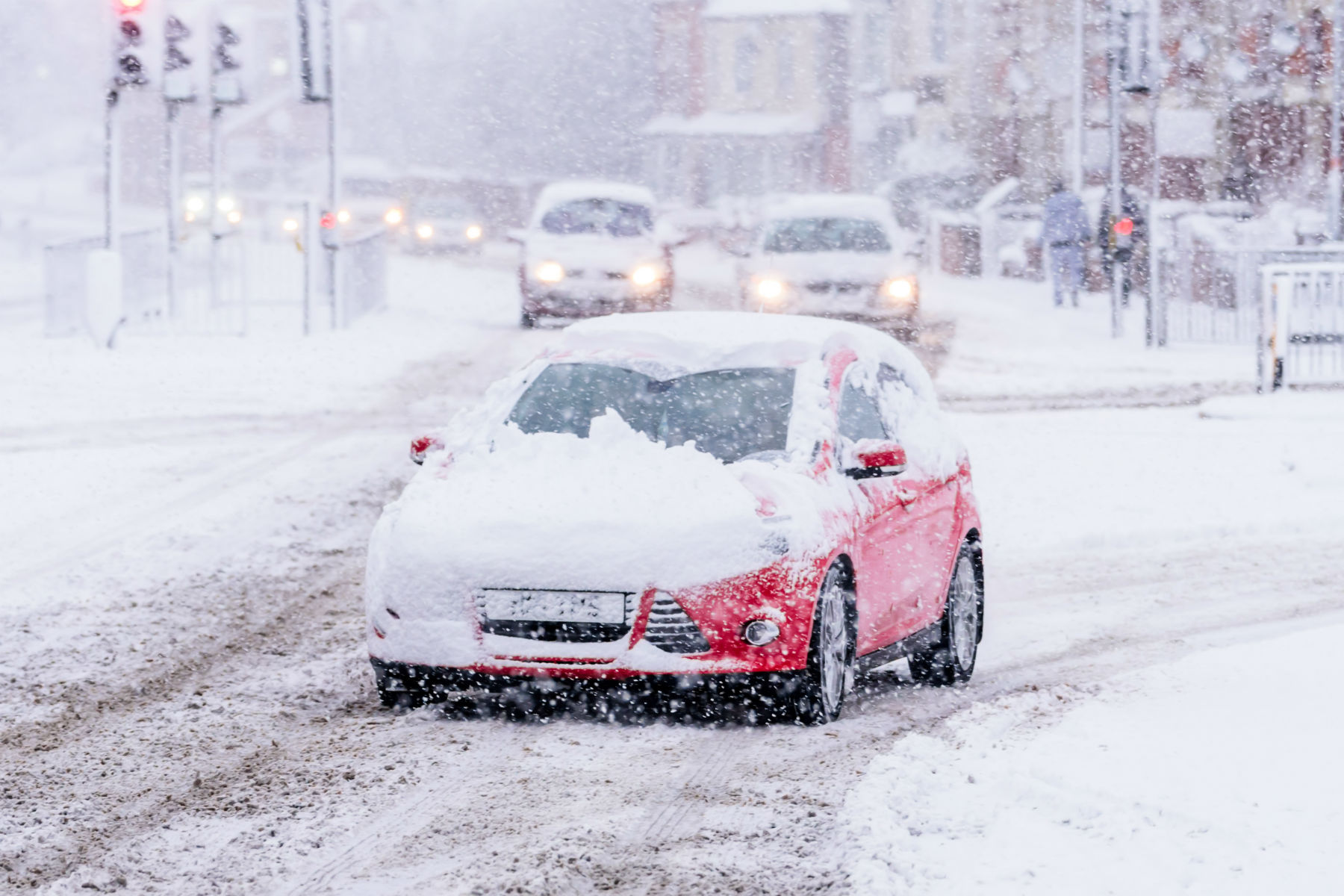With the snow closing in, drivers in Northern Ireland have already experienced snow and icy roads over the last few days.
Icy temperatures are set to continue with snow forecast to fall across the country this week – so drivers need to ensure their cars are ready for the roads
According to the AA, one in six of the breakdown calls they receive at this time of year are from drivers who are experiencing difficulties with their tyres.
Tyres have their work cut out trying to deal with the treacherous conditions, which is why making sure they are in good condition should be high on your winter checklist.
It is essential that you check for any damage like nails or foreign objects sticking in the tyres or any cracks, splits, or bulges in the rubber and on the tyre wall.
You also need to check tread depth. The legal minimum level is 1.6mm, but breakdown recovery providers recommend in winter to have at least 3mm to ensure the tread pattern can better shift standing water or light snow away from the tyres so they can grip the road better.
Also, make sure your tyre pressure is correct. Continental Tyres reports that it’s normal for tyres to lose pressure over time as air permeates through the tyre – usually at a rate of around 1-3 psi (pounds per square inch) per month.
But that’s before the effects of cold weather are considered, which sees the air inside the tyre contract and lose 1-2psi for every 10°C drop in the outside temperature.
An under-inflated tyre won’t be hard enough to manage the forces generated through cornering and makes the vehicle more difficult to control and extend braking distances, especially in difficult conditions.
It will cost you too, with every 4.3 psi pressure loss resulting in an additional 1.5 per cent use of fuel. That’s easily more than a £1’s worth from every tank. And an underinflated tyre will wear out faster and puncture more easily.
You can find the recommended ‘psi’ and ‘bar’ in your car’s owner’s manual.
This is sometimes listed on a sticker located inside one of the front door sills.
If you often drive when temperatures are at their lowest, you might also want to consider fitting winter tyres.
These typically operate better than summer tyres below 7 degrees. They also have different tread patterns designed to cope better with less ideal conditions.
Find the tyre experts on Yellow Tom – www.yellowtom.co.uk
ARE YOU ON THE RIGHT TRACK FOR SNOW AND ICE?


One response to “ARE YOU ON THE RIGHT TRACK FOR SNOW AND ICE?”
Excellent article. The info on the pressure,if you dont have a manual,would on the door pillar. Usually drivers side.
Further info. As said tyre pressured are very critical. The thinnest part of a tyre is the sidewall.With cornering and parking it is required to flex a lot. So the pressure has to be correct to prevent over flexing, which causes heat buildup and excessive wear.
20 years with Michelin Tyres in Europe and with others in Australia is my background. So I know a little about the subject😄